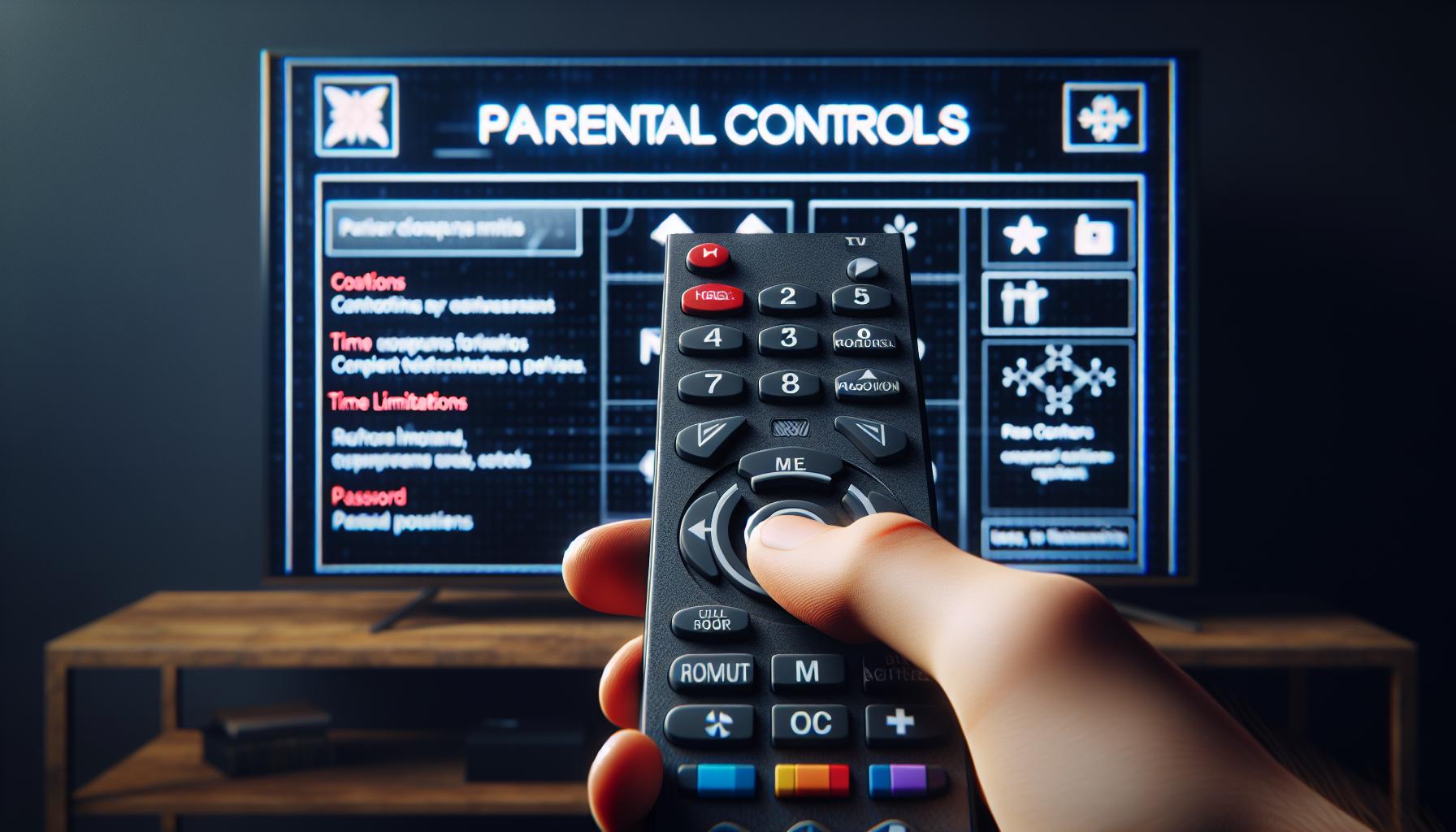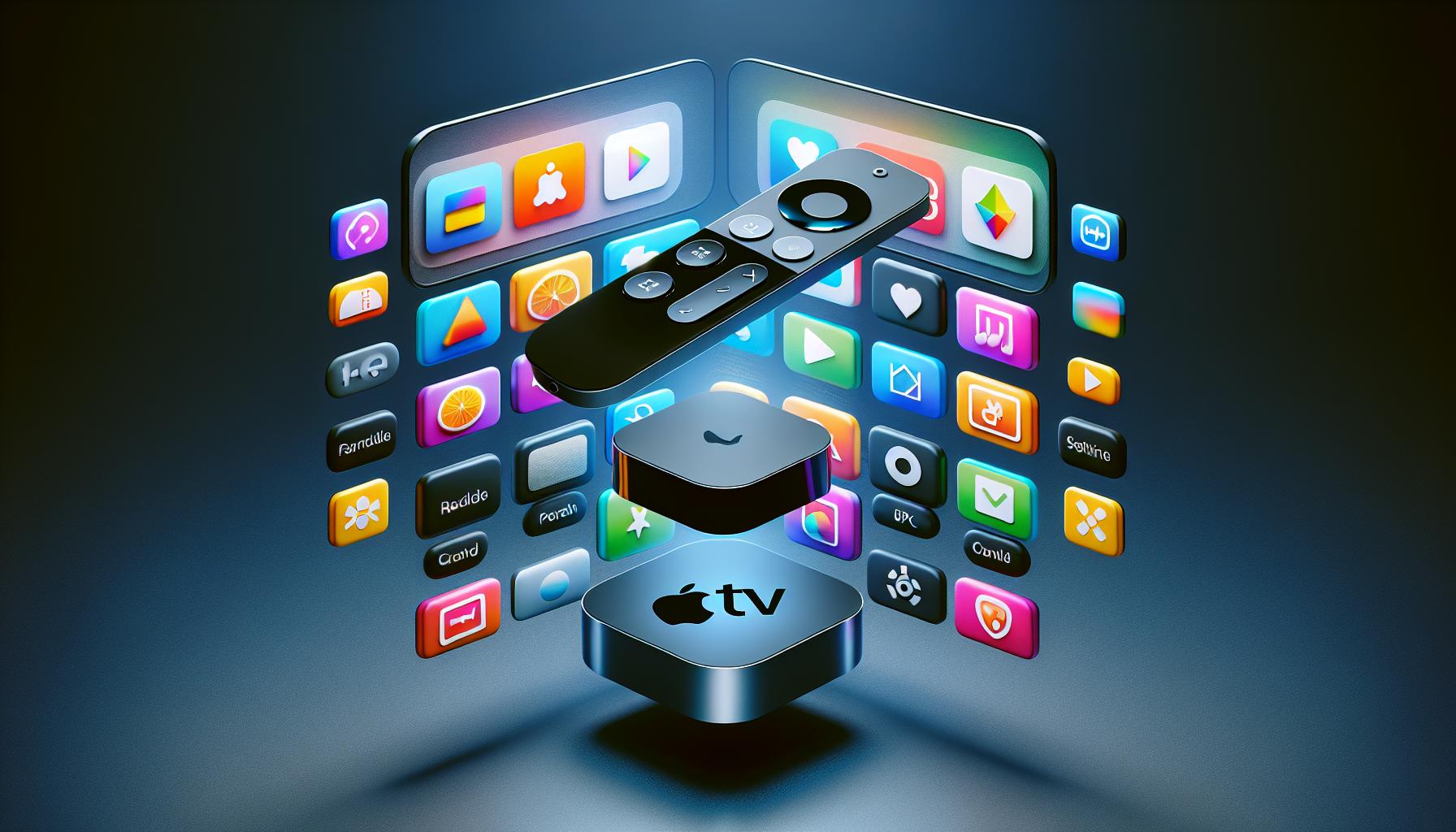Navigating your Apple TV's interface can feel like a maze if you're not familiar with it. But don't worry, we've got your back. This article will guide you on how to get to settings on your Apple TV, and it's simpler than you might think.
Whether you're trying to adjust your screen resolution, set up parental controls, or tweak your audio settings, it all starts with accessing the settings menu. With just a few clicks on your Apple TV remote, you'll be there in no time.
Understanding the Apple TV interface
So you've turned on your Apple TV, now what? Don't worry. Navigating through the Apple TV interface is as easy as pie once you get the hang of it.
First things first. The home screen is where the magic happens. This is the screen you'll see when you first power on your device. It's filled with a variety of app icons, serving as your gateway to entertainment. Below are a few key areas of the home screen you should familiarize yourself with:
- Top Shelf: The topmost row of your home screen is known as the top shelf. Your favorite apps reside here for quick accessibility.
- Main Grid: Directly below the top shelf, you'll locate the main grid. This is your playground, filled with all the different apps you can navigate through with your remote.
- Dock: At the bottom of the screen lies the dock. It's where Apple's signature apps are housed including App Store, Settings, Music, and TV.
The Apple TV remote is your primary tool for navigating through this interface. The touchpad at the top of your remote is for quick selection and navigation while the menu button acts as your 'back button'. Then, there's this invaluable tool - Siri button, the voice-command function. Just hold it down and speak your command. Be it 'Open Netflix' or 'Search for comedy movies', Siri's there to save the day.
But here's where it gets interesting. Not only is your remote a navigation tool, but it also doubles up as a gaming controller. Its accelerometer and gyroscope functionalities can detect motion and orientation changes, making your gaming experience more immersive.
Yes, it's true! Exploring the Apple TV interface can indeed be a fun-filled experience. As you delve deeper into it, you'll discover a wide array of features and settings to customize your experience.

Getting to the main menu on your Apple TV is straightforward. It's your gateway to all the content your device has to offer. Understanding how to access it is crucial to maximizing the potential of your Apple TV.
Start by waking up your Apple TV. Press any button on your Apple TV remote which will bring you back to life. The illuminated Apple TV Home Screen signifies you're in the right place. Now, you're ready to begin navigation.
The home screen on your Apple TV consists of a top shelf, a main grid, and a dock. These make up the overall interface where you'll find all your apps and settings. To navigate this interface, use your Apple TV remote.
This is not your typical remote. It's a sophisticated tool equipped with advanced features. It has a touchpad for smooth navigation and a menu button to go back. There's also a Siri voice command function allowing you to simply ask Siri to do the work for you.
To get to the main menu, swipe the touchpad on your remote. Swipe left or right to move between the apps. Swipe up or down to access the top shelf or scroll through options. Don't forget the menu button - it's your friend when you want to back out of an app or screen.
Of course, if you prefer a hands-off approach, remember Siri is there to help. Simply hold down the Siri button on your remote and say, "Go to the main menu" or "Open Settings". Siri will carry out your command and you'll be exactly where you want to be.
Bear in mind, your Apple TV remote isn't just a navigation tool. It also doubles as a gaming controller for those who enjoy delving into the world of gaming on their Apple TV. The more you use it, the more familiar you'll get with its functionality and versatility.
With your remote in hand and these tips in mind, exploring the Apple TV interface becomes a fun and customizable experience. Keep experimenting with different commands, browse through different apps, and make your Apple TV truly personalized to your entertainment needs.
Getting your bearings in the Settings Menu might seem like a daunting task. Don't worry, you're not alone. Here's a simple walkthrough to make things easier for you.
When you click on the Settings icon, you'll see a sidebar menu appear on the left-hand side of your screen. This vertical bar consists of these sections:
- General
- Users and Accounts
- AirPlay and HomeKit
- Remotes and Devices
- Network
- Apps
- System
- Sleep Now
You move up and down on this list using your remote's touchpad. Once the desired section is highlighted, you click on it, which leads you to a submenu filled with more options.
Of course, these options vary according to the section you're in. For instance, under General, you can adjust your Apple TV's screen savers, language, region format, and time zone, among other things. On the other hand, you can manage who gets access to your Apple TV in the Users and Accounts section.
Figuring out the most effective way to navigate your Apple TV's Settings Menu ultimately comes down to your personal preferences and needs. Take the time to explore the various menu options and submenus. With experimentation and usage, you’ll become proficient in no time.
Sure, it may seem somewhat tricky at first, but you'll get the hang of it soon. So, dive in! Let's get you comfortable with your Apple TV Settings Menu.
Adjusting display and audio settings
To make your viewing experience as enjoyable as possible, adjusting display and audio settings on your Apple TV can provide a significant change. The path to making these modifications isn't complicated. Let's walk through the step together.
The first thing to do is navigate to Settings from your Apple TV home screen. Click on the grey gear icon labeled 'Settings' on the main menu. Using the touchpad on your remote, move the cursor and click to confirm your selection.
In the settings menu, you'll find several different sections and submenus. Look for 'Video and Audio'. Here, you're free to adjust various aspects of your viewing and listening experience. You can revise the resolution, frame rate, and audio output to match your TV's capabilities. It's crucial to make changes according to the TV's compatibility to enjoy true HD or 4K quality.
Experimentation is vital here. Try different configurations until you've found the one that resonates with your viewing preferences. Is the high-definition display too jarring? Lower the resolution. If the audio isn't creating that perfect home theater feeling, experiment with the audio output settings. You'll begin to understand what each function does, and ultimately, it'll lead to a more personalized viewing experience.
To adjust display settings, select 'Video Output'. Here you can change the resolution, select Light or Dark mode preference, and even modify the Chroma settings for the best image quality.
Next, to adjust audio settings, select 'Audio Output'. In this menu, you can manage speaker selection and audio format. You can even enable a feature called 'Reduce Loud Sounds', which will minimize the volume of loud scenes while increasing softer sounds. You won't miss out on any important audio cues, and you won't get startled by an unexpectedly loud scene!
Remember, it's your Apple TV, and you should tailor it to your preference. Experiment until you find what fits best. While there are default settings that work for everyone, personalizing these settings can dramatically enrich your entertainment experience. Your Apple TV is more than a media center—it's your personalized portal to the world of digital entertainment.
Setting up parental controls

When it comes to creating an environment suitable for everyone in the family, parental controls play a significant role. With Apple TV, you're given a degree of control to limit content and set restrictions. In this section, we'll guide you through the process of setting up parental controls on your device.
Kick off by navigating to your Settings Menu. From the main screen, scroll to access this option. Upon entering Settings, move down the list until you spot General, a segment with various feature controls. The option for parental controls is not prominently placed, so you'll find it snuggled under the sub-heading titled Restrictions.
Activation is pretty straightforward. Upon selection, you'll be prompted to create a four-digit passcode. Keep this passcode safe and out of the reach of your little ones. It's your tool to manage restrictions effectively on your Apple TV.
But what exactly are the restrictions you can impose? Well, here's a brief overview:
- Apps: Control the download and deletion of apps on the device.
- TV Shows and Movies: Restrict viewable content based on its rating.
- Siri Explicit Language: Filter unwanted language from Siri's responses.
- Game Center: Control multiplayer games, adding friends, and screen recording.
Throughout the implementation process, remember that Siri, your friendly voice-command assistant, can be a great helper. You can easily ask Siri to guide you to the Restrictions menu or other specific locations within your Apple TV interface.
Customizing your TV environment to suit your family's needs is a privilege that Apple TV allows seamlessly. Experiment with the settings, personalize the restrictions, and create a space that your kids can safely enjoy.
Conclusion
Mastering your Apple TV settings is key to optimizing your viewing experience. You've learned how to navigate the interface, use your remote effectively, and tweak the display and audio settings. You're now equipped to customize your Apple TV to suit your needs and preferences. Remember, the Settings Menu is your friend - it's where you can adjust everything to your liking. Don't forget about the parental controls too. They're crucial for creating a safe and enjoyable environment for your kids. So go ahead, explore, experiment, and make the most of your Apple TV. You're in control now. Happy viewing!
Navigating through Apple TV's interface primarily involves using its remote, which features a touchpad and menu button. You can explore the various sections like the top shelf, main grid, and dock. You can also use Siri voice-command for easy access.
2. Can the Apple TV's remote be used as a gaming controller?
Yes, the Apple TV remote can be used as a gaming controller. This added feature brings an extra layer of versatility, making your Apple TV not just a standard entertainment center but a comprehensive gaming hub.
Accessing the main menu on Apple TV can be done using the menu button on the remote. It opens up a vast array of options, allowing you to explore and customize according to your entertainment preferences.
To navigate through the Settings Menu, use the Apple TV remote. You can click on the different sections and submenus, adjusting settings such as resolution, frame rate, audio output, and more according to your preference.
5. How do I adjust the display and audio settings on Apple TV?
Go to Settings on the main menu. Click on 'Display and Sound', and you'll be able to access and modify the resolution, frame rate, audio output, and other settings. Experiment with these to find your optimal viewing experience.
6. How can I set up parental controls on Apple TV?
Parental controls can be set up on Apple TV by creating a passcode under General Settings. You can impose various restrictions, allowing you to customize the TV environment to suit your family's needs.




